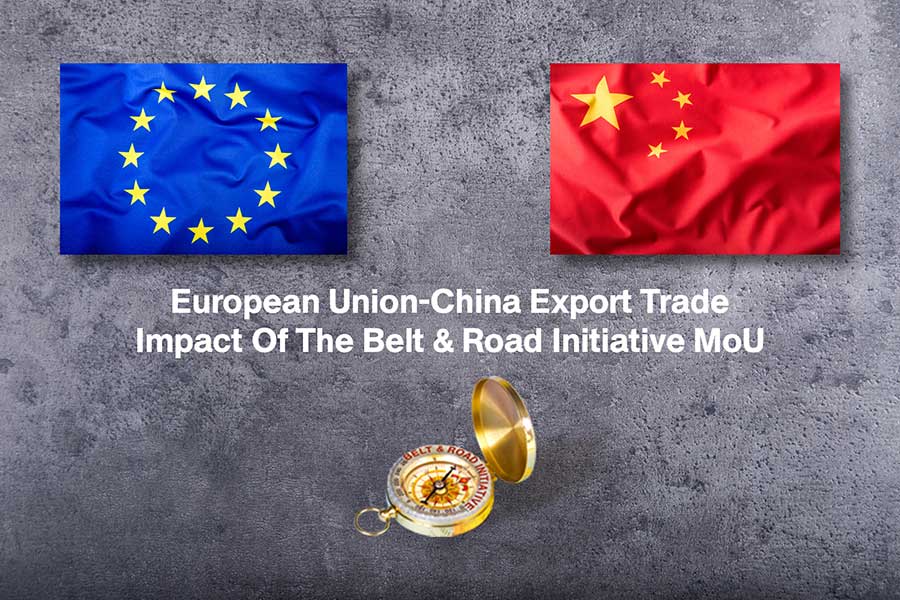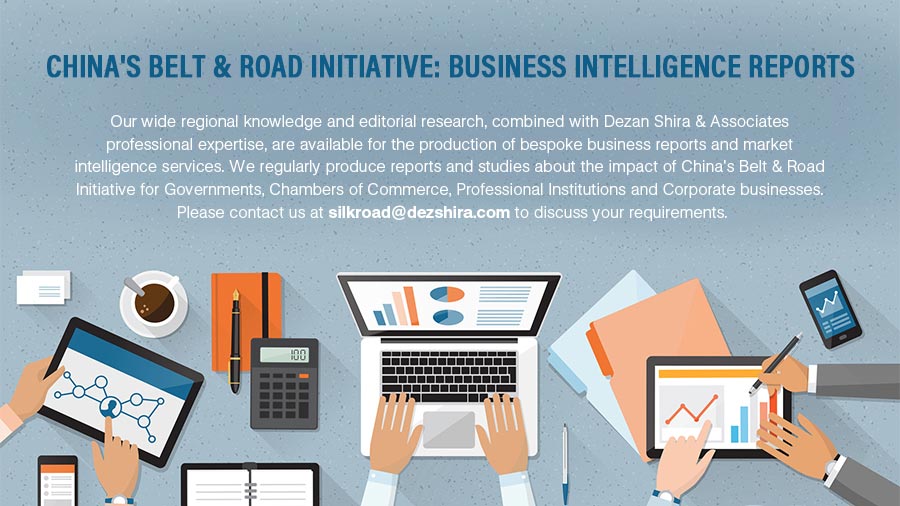Mixed China Export Results For European Union Countries Who Signed Up To The Belt And Road Initiative – But The Opportunity Is There If They Know How To Take It

Op/Ed by Chris Devonshire-Ellis
- EU members who signed BRI MoU are lagging behind in China export growth
- Lack of resources, research infrastructure and market awareness may be an issue
- The China consumer market is growing and will hit 550 million by 2024
- Closing the knowledge gap is key to understanding and implementing a successful China export strategy
An examination of the most recent past three years of EU export data to China, courtesy of COMTRADE and Trading Economics sources has revealed that much still needs to be done by the European Union countries who signed up to China’s Belt and Road Initiative. In fact, against their counterparts who have not signed up to the BRI, they have underperformed by nearly 5% in export growth rates to China the past three years.
We can examine these statistics below. Figures include exports in both goods and services and are in billions of Euros.
| EU Member States Not Part Of China’s Belt & Road Initiative: Exports To China | |||
|---|---|---|---|
| Country | 2016 | 2019 | Percentage Growth |
| Belgium | 6.35 | 6.73 | 5.99 |
| Denmark | 2.85 | 3.21 | 12.76 |
| Finland | 2.50 | 3.25 | 30.16 |
| France | 15.11 | 19.83 | 31.24 |
| Germany | 72.32 | 91.62 | 26.69 |
| Ireland | 3.17 | 7.79 | 145.74 |
| Netherlands | 6.13 | 7.00 | 14.19 |
| Spain | 2.88 | 4.19 | 45.88 |
| Sweden | 4.57 | 6.38 | 39.61 |
| Total & Average | 115.88 | 150.00 | 39.09 |
| (Source: COMTRADE, Trading Economics) | |||
| EU Member States Who Signed MoU To China’s Belt & Road Initiative: Exports To China | |||
|---|---|---|---|
| Country | 2016 | 2019 | Percentage Growth |
| Austria | 3.04 | 4.21 | 38.48 |
| Bulgaria | 0.47 | 0.77 | 63.83 |
| Croatia | 0.07 | 0.10 | 42,85 |
| Cyprus | 0.04 | 0.03 | -25.00 |
| Czech Republic | 1.65 | 2.09 | 26.66 |
| Estonia | 0.15 | 0.15 | – |
| Greece | 0.32 | 0.84 | 162.5 |
| Hungary | 1.86 | 1.41 | -24.19 |
| Italy | 10.40 | 12.30 | 18.27 |
| Latvia | 0.11 | 0.15 | 36.36 |
| Lithuania | 0.12 | 0.26 | 116.67 |
| Luxembourg | 0.01 | 0.21 | 110.00 |
| Malta | 0.04 | 0.03 | -25.00 |
| Poland | 1.65 | 2.28 | 38.18 |
| Portugal | 0.64 | 0.57 | -10.94 |
| Romania | 0.58 | 0.72 | 24.14 |
| Slovakia | 1.08 | 1.61 | 49.07 |
| Slovenia | 0.26 | 0.25 | -3.8 |
| Total & Average | 22.49 | 27.98 | 35.34 |
| (Source: COMTRADE, Trading Economics) | |||
While many of the EU members who signed up to China’s BRI did so with the intent of developing channels to increase exports to China, the results have been mixed. Some of these are smaller nations, with limited resources and a lack of resources: China trade ‘experts’ within the Government departments responsible for export may appear well versed when compared with their local colleagues, however might not possess the true relevant trade or business expertise.
Understanding China and its markets, and successfully selling to them requires a thorough and continuously updated knowledge of the following subjects:
What Does China Want To Buy?
It’s not an issue of the products a country has to sell, it is matching these and developing them to what China (and other markets) wish to buy. China, along with many other nations, releases a list of categorized items approved for import every year and under what conditions. It is frequently updated, with the latest having been just this past month. Exporters need to know the status of the product they wish to sell, in addition to the Chinese import duties and applicable VAT rates as these all impact on the retail price and the eventual market viability.
One particular interest at present is China’s desire to buy more food products from overseas, issues we discussed in the recent articles New Growth Opportunities In China’s F&B Market about foodstuffs especially in the piece Exporting Food Products To China: Regulations & Procedures and about meats in the article Exporting Meat Products To China During Covid-19. China is a large importer of food – it has 20% of the worlds population and just 5% of available arable land. These are important sectors for EU farmers and specialist producers to target.
What Does China Want To Sell?
China also regulates its exports, and businesses who trade with China need to know how this works. In fact, just last week China issued its latest China Export Control Laws. This affects both Chinese exporters and foreign buyers, who must carefully review their compliance to Beijing’s export control policy. This law, which comes into effect from December 1 this year, will tighten up the country’s export’s supervision regime.
Protecting Yourself & Getting Paid
So you have a customer who wants to purchase your product. Great!
But there are other issues at stake here:
The need to register trademarks?
Labelling & naming products for the China market;
Due diligence on the buyer;
Sales contracts enforceable under Chinese and International law;
Understanding how the payment mechanism works and ensuring you receive your money.
All these issues need to be understood, and these require a knowledge of Chinese, not EU laws.

Understanding Taxes And Trade
Again, this is a moving target, with duties, exceptions, incentives all changing on a regular basis. We provided a recent overview of the various component parts in the article Import-Export Taxes And Duties In China. Other administrative issues also come into play, such as understanding China’s HS codes, selling to China through Online Platforms and other China trade disciplines.
Double Tax Treaties & Free Trade Agreements
China offers a wide range of incentives to assist bilateral trade, and especially with smaller countries. While the EU and China haven’t yet been able to agree terms on a trade deal, there are other applicable bilateral treaties that can help. These include Double Tax Treaties that China has agreed, these can be used to reduce profits taxes and assist in trade. The terms of these are regularly updated.
Many of the EU member states that have signed up to China’s BRI are members of the China & Central And Eastern European Countries Cooperation (CEEC), or 17+1. China takes its commitments to this very seriously and it operates as a discussion forum and trade panel to help with BRI projects as well a bilateral trade development.
Increasing Rail Connectivity: Exploit The Infrastructure
During 2020, partially due to the impact of Covid-19 and the suspension of many air services, but also due to cost effectiveness, the volume of rail freight between China and Europe doubled. They reached a record high of 1,247 in August this year, up 62% over 2019 figures, transporting 113,000 TEUs of goods, itself an increase of 66% over the year. China outbound trains carry goods like daily necessities, equipment, medical supplies and vehicles while China inbound trains transport milk powder, wine and automobile parts among other European sourced products. This makes products more competitive as costs are reduced and rail freight reestablishes itself as the normal export mechanism. There are other benefits for European businesses too, we identified 44 key hubs throughout Europe that present opportunities to exploit these new trade routes in the article 44 Key & Emerging European Freight Hubs To Watch.
It is clear that while EU and BRI member countries such as Austria, Italy and Poland are doing well with their China export development, smaller nations such as Estonia, Malta, Portugal and Slovenia, as well as Hungary, should all be doing rather better. All in fact have resources and make products that Chinese consumers wish to buy. The opportunities arrive through attention to detail, and the application of sensible market research, not just the signing off on a Belt and Road MoU. Governments and local businesses should be paying attention to the emerging needs of China – and Asia – and be getting more proactive in their engagements. If not – an opportunity will be missed and regional competitors get into a China market that is set to increase its middle class to 550 million by 2024. Now is the time to invest in exports to China.
Related Reading
- China’s Belt And Road Initiative Member Countries: Exports Up 28% In Three Years
- The European Belt & Road: Railways, Roads & Ports That EU Investors Should Be Examining For Post-Completion Investment Opportunities
About Us
Silk Road Briefing is written by Dezan Shira & Associates. The firm has 28 offices throughout Asia, and assists foreign investors into the region. For strategic advisory and business intelligence issues please contact the firm at silkroad@dezshira.com or visit www.dezshira.com





